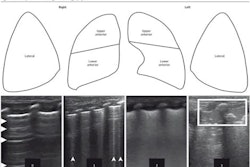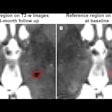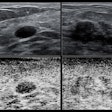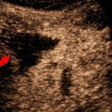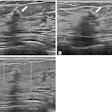Ultrasound-based strategies fall short of biopsy in detecting endometrial cancer in non-Hispanic Black women, according to research published February 21 in Gynecologic Oncology.
A team led by Angela Nolin, MD, from Duke University in Durham, NC, also found that the value of universal biopsy compared to an ultrasound-based strategy is highest in non-Hispanic Black women who have postmenopausal bleeding. And fibroids in these women decrease endometrial visualization and probability of adequate workup.
“These results suggest that endometrial sampling should be offered at time of initial evaluation for postmenopausal bleeding,” the Nolin team wrote.
While ultrasound is one go-to method for evaluating endometrial thickness to rule out endometrial cancer in women with postmenopausal bleeding, the researchers noted that this method is not validated in non-Hispanic Black women. They further highlighted that differences in ultrasound performance between non-Hispanic Black and non-Hispanic white women may worsen disparities in cancer-associated survival.
Nolin and colleagues developed a decision-tree model to explore the potential impact of racial differences in ultrasound characteristics and receipt of appropriate follow-up after an abnormal ultrasound. With this, they compared the performance of ultrasound-based strategies versus an in-office endometrial biopsy-based strategy for addressing patients with postmenopausal bleeding.
The model’s development was informed by literature and institutional data, while the team used patient-level data to model fibroid prevalence, endometrial visibility, and race.
In a simulated cohort of 10,000 women with postmenopausal bleeding, ultrasound-based strategies missed 109 cancer diagnoses compared to 70 missed for biopsy-based strategies.
When comparing results for non-Hispanic Black women and non-Hispanic white women, the researchers reported the following:
- For Black women, 114 cancers would be missed with ultrasound-based strategies, compared with 106 for white women. Of these missed cancers, 43 would be high-grade in Black women and 17 in white women.
- Incremental biopsies per additional cancer detected with biopsy-based strategies were 123 for Black women and 155 for white women.
- Incremental biopsies per additional high-grade cancer detected were 321 for Black women and 981 for white women.
- Under observed follow-up rates, biopsy-based strategies resulted in 33 biopsies/additional cancer detected for Black women and 44 for white women.
The study authors wrote that non-Hispanic Black women gained higher value from biopsy-based strategies than non-Hispanic white women, meaning fewer biopsies were needed and more cancers detected. They added that this finding was particular for when fibroids were present.
The study authors highlighted that delays in diagnosis under ultrasound-based strategies may add to survival disparities in women, since fibroids and high-grade histologies are more common in non-Hispanic Black women.
“Considering these findings, endometrial sampling, when in line with patient preferences, should be offered at the time of initial evaluation,” they wrote.
Still, the authors noted that some areas need to be evaluated before implementing biopsy-based strategies. They wrote that formal evaluation of patient acceptability, implementation challenges, and cost-effectiveness are needed to estimate the impact of changing recommendations for evaluating postmenopausal bleeding on clinical practice and patient outcomes.
The full study can be found here.







